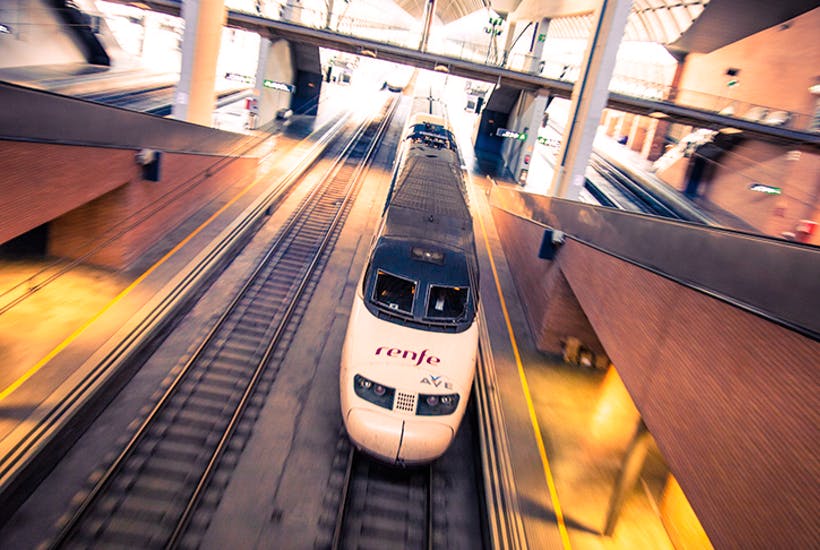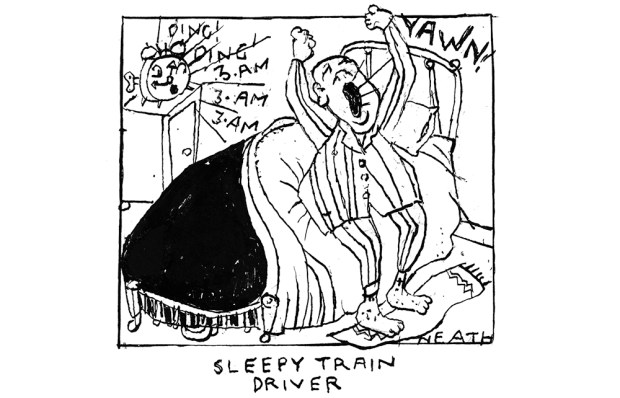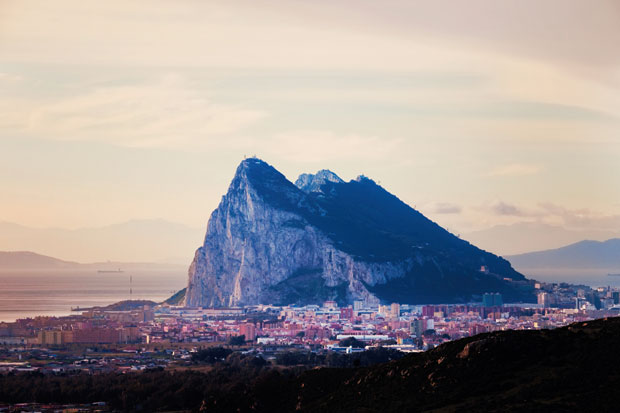The first railway line in Spain, from Barcelona to Mataro a few miles up the coast towards the French border, was built in 1848 by British workers and with British expertise. I was reflecting on this, and the huge difference today between the services provided by our two countries’ railways, as the train passed through Mataro on the way to Girona. The 90-minute journey, for those of us of a certain age with a tarjeta dorada, cost five euros. The return journey to Barcelona by express train took 38 minutes and cost less than ten euros.
Train travel in Spain is not only amazingly cheap; it is comfortable, efficient and almost always punctual. When you buy a ticket, you are automatically allocated a seat, and a screen in each carriage gives the destination, intermediate stops, the time and outside temperature. A recorded announcement of the next stop is made three minutes before arrival, in Spanish and English. In pleasing contrast to the experience on English trains, there are no irritating interruptions from a ‘train manager’ telling you that the buffet is closed or to check that you have all your belongings before leaving the train. Sunday timetables, unlike those in Britain, are similar to weekdays.
When Spain’s railway lines were first laid, a broader gauge was adopted than that used in France — apparently to deter another French invasion, this time by train, only a few decades after Napoleon had crossed the Pyrenees and deposed the Spanish king. Along the north coast the trains still run (slowly) on a narrow-gauge track, stopping at stations every few minutes on the delightful route between Galicia and the Basque country.
In the 1920s V.S. Pritchett commented that ‘the trains are as slow as oxen and as rare as eagles’. That may still be true if you travel between Bilbao and San Sebastian (60 miles, two-and-a-half hours), but since the introduction of the high-speed Ave trains, it takes the same time to cover the 330 miles between Madrid and Seville, and there are 17 trains a day on that route.
The state-owned company Renfe has been responsible for the rail network for the past 75 years, and Spain may well have the largest number of stations of any European nation. At most, the station-master (always wearing a tie) puts on a scarlet kepi-style cap as a train arrives. I took several journeys this summer (Madrid to Plasencia, Zafra to Seville, Vitoria to San Sebastian) and none cost me more than eight euros.
A couple of years ago I travelled almost the breadth of Spain by train, from Alicante on the Mediterranean coast to the Roman city of Merida in Extremadura. It took most of the day, with one change roughly halfway in Ciudad Real, where there was time for a good lunch. As we passed through the Don Quixote country of La Mancha and then crossed valleys fringed by hills on the edge of the Sierra Morena, it was so much more enjoyable than driving.
My father used to like poring over Bradshaw’s railway guides of a winter’s evening and I think I have inherited his passion for timetables — though nowadays I research them on the excellent Renfe website.
Got something to add? Join the discussion and comment below.
Get 10 issues for just $10
Subscribe to The Spectator Australia today for the next 10 magazine issues, plus full online access, for just $10.
You might disagree with half of it, but you’ll enjoy reading all of it. Try your first month for free, then just $2 a week for the remainder of your first year.














Comments
Don't miss out
Join the conversation with other Spectator Australia readers. Subscribe to leave a comment.
SUBSCRIBEAlready a subscriber? Log in